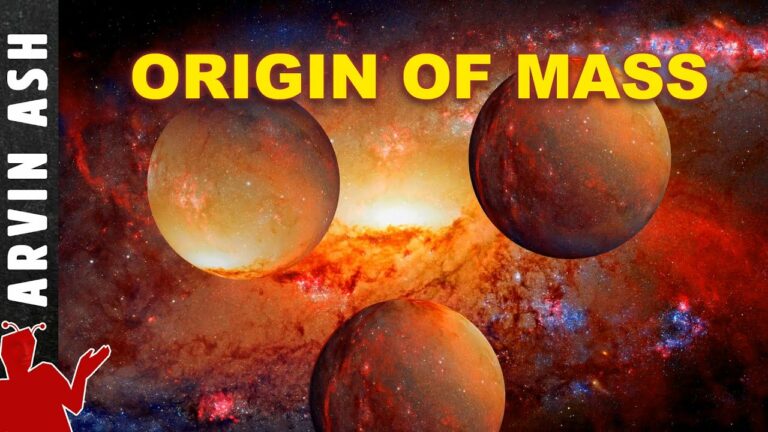What is the ORIGIN of all MASS in the Universe? Physics of symmetry breaking
What is the origin of mass in the universe? Symmetry breaking. Symmetries in quantum mechanics result in 3 of the fundamental forces of nature – electromagnetic, weak and strong forces. However, the breaking of certain symmetries is just as important as symmetries. Without it no mass would exist in the universe and no life would exist.
What is symmetry in physics? it’s when the properties of particles don’t change after being subjected to transformations. The simplest example is the fact that the laws of physics are the same whether you are here, or in China – this is space translation symmetry. Symmetries show us that mother nature has some simple rules it uses to build the universe.
Imagine a Mexican hat potential. Now if I asked you to place a ball such that you didn’t break symmetry, you would only have one choice – in the middle, at the maximum. What if instead, we put the ball in one of the minima? Now the symmetry would no longer exist. This is a representation of how the Higgs mechanism works to impart mass to fundamental particles. Certain fundamental particles break symmetry by not being in the center, by being in the non-zero potential of the Higgs field.
The issue with the standard model is that all particles must be massless according its equations. This is a demand from the symmetry of the equations. So how do masses of the fundamental particles come about? symmetry breaking.
What is symmetry breaking? Briefly, modern quantum theory shows that all particles are excitations in fields that permeate the entire universe. The lowest energy state of all the other fields is zero. This means that even though they are modulating and changing, meaning that particle and antiparticles are quickly coming in and out of existence forming and annihilating all the time, overall the energy used to create and annihilate these virtual particles has a net value of zero. But the Higgs field is different . It’s field is non zero, even in empty space.
This means our Higgs field becomes massive at a lower energy state, and any fundamental particle that interacts with it gains a rest mass. All the mass associated with the particles of the standard model is due to the fact that they interact with the Higgs field. Particles that don’t interact with the Higgs field remain massless, like the massless photon.
But symmetry breaking is responsible for all mass, not just the mass of fundamental particles. The mass of protons and neutrons comes mainly from the binding energy that keeps quarks glued together inside protons and neutrons, as well as the biding energy that keeps protons glued to other protons and neutrons in the nucleus. It comes from gluon interactions associated with the strong force.
What kind of symmetry breaking explains this binding energy? Chiral symmetry. A chiral symmetric theory treats left handed and right handed particles the same. But the standard model is not a chiral-symmetric theory. It does not treat left and right-handed particles the same.
Consider a left-handed up quark. It has a mass of about 2.3 MeV. The anti-particle of this quark will be right handed.
When these two quarks are bound together, this combination is called a meson. If left and right chirality were treated equally, this meson would annihilate with a net energy of roughly zero. The combination of a quark/anti-quark pair would result in zero mass.
However, if chiral symmetry is broken, they are not treated equally, and the net energy is NOT zero. In fact the total mass is 135 to 140 MeV. Where did this increase in mass come from? It comes about due to chiral symmetry breaking.
The gluons form a kind of cloud around the quarks. This confines the quarks, breaks chiral symmetry, and generates the binding energy that is measured as mass of the meson. The same phenomenon occurs in protons and neutrons. This is the origin of 99% of the visible mass in the universe. The other 1% is due to the Higgs boson.
Do not forget to share your opinion with us to provide you with the best posts !




0 Comments